Let’s shift some gears and talk about bettas today. Bettas have always been a great area of interest for us —in fact, many hobbyists start keeping tropical fish with a betta.
What many people don’t appreciate are the many wild strains of bettas. “Wild bettas” are something that have not been hybridized or selective bred—they are in the same form as found in nature.
I have several species that I am breeding or trying to breed, but my most favorite of all is Betta hendra.
Betta hendra belongs to the Coccina Complex (A “complex” contains a number of species that evolved similarly). All the bettas in this complex are bubblenest builders and don’t get bigger than 4-6 centimeters in size.
They are small predatory fish; throw some blackworms in the tank and then see how they “hunt” down their prey. Here’s a video of them eating grindal worms. Grindal worms are high in fat and they are known to “condition” the bettas for breeding:
Keeping Betta hendra can be fairly easy once you understand what they actually want. I have them in 3-gallon tanks with lids. Utilizing a lid or cover is very important because it keeps them from jumping out, keeps evaporation at minimal, maintains a warm layer of air above the water’s surface, and that layer of warm air also works as an insulating buffer. I keep my temperature somewhere between 74-78F. In my opinion, temperatures higher than 78F increases the rate of metabolism in bettas, which in the long run shortens their lifespan.
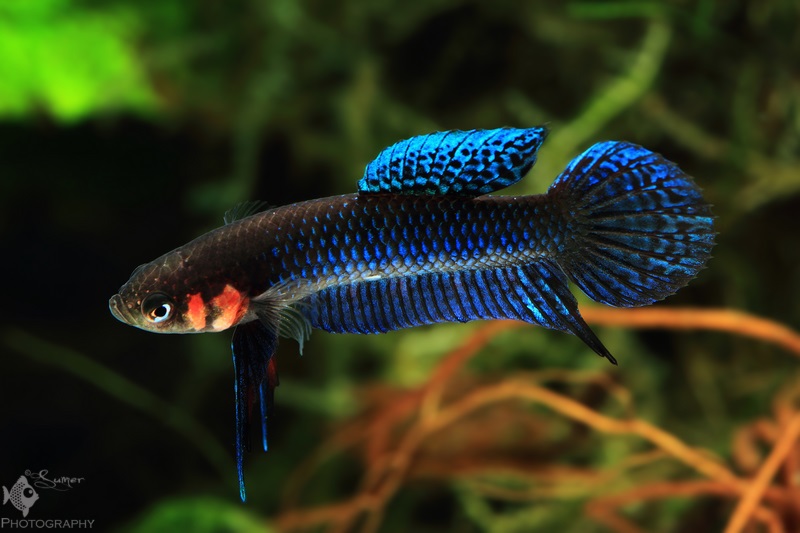
Betta hendra is not a very timid species of betta. Until you make a loud noise or tap the glass, they don’t mind you hanging around and taking their picture.
I decorate their tanks in a specific way. I make sure there is some moss in the bottom of the tank in one corner where the female can go and hide when male is behaving aggressively, charging at her. I also add some big-leaved Anubias plants where the male and female can hang out under the leaves. I also add almond leaves and or almond leaf extract in the tank just to make the water brown and slightly acidic (I take photos before doing so). I also make sure that I put a black paper under the tank so that the light does not reflect back. It can overwhelm the bettas sometimes.
I then add a film canister and a small piece of styrofoam cup for the male to make the nest under. I also make sure that the bottom area under the film canister and styrofoam piece is empty so if an egg falls from the nest, the male can easily spot it and pick it up. I have had mixed kind of success by putting both: film canister and styrofoam piece. Some males get confused while rearing the eggs and they start moving their nests from one place to another.
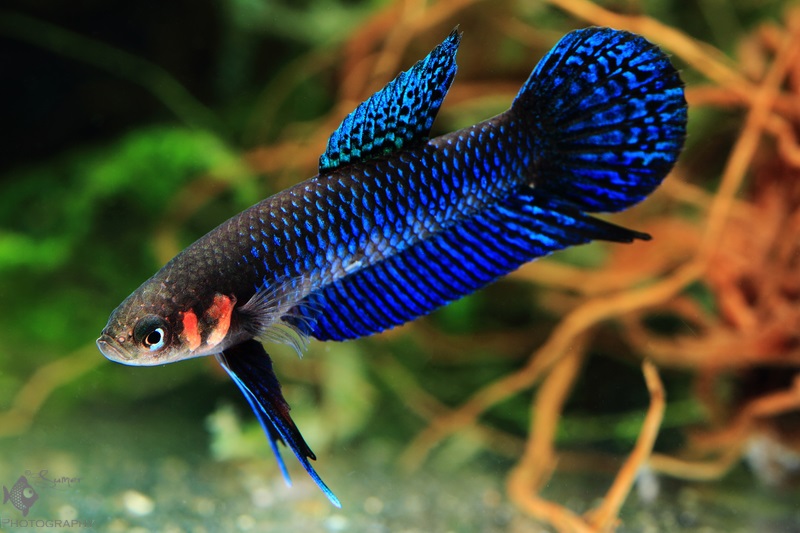
Their peculiar “two line beauty mark” on their cheeks of Betta hendra make them look even more dramatic.
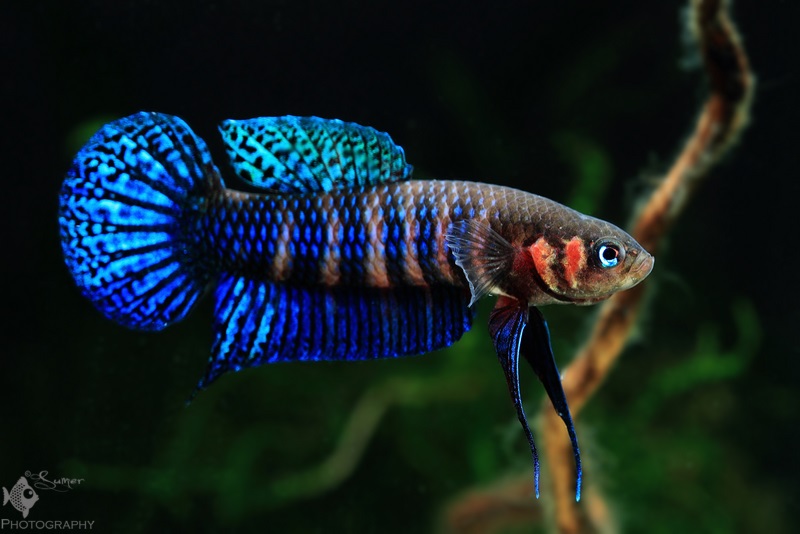
Note the difference in the length of pelvic fins. The second image was taken 2 months after taking the first photo.
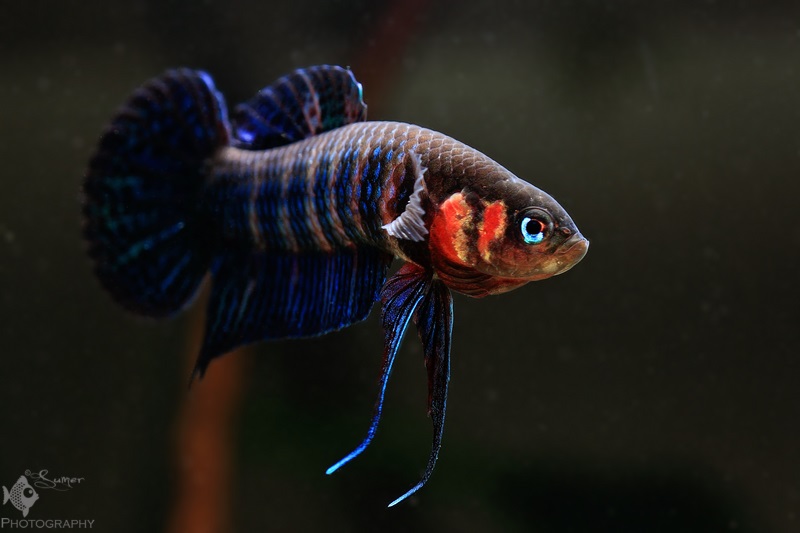
When flaring, males and females both display vertical bars on their body. The blue and red color on the cheeks get even more intense in appearance.
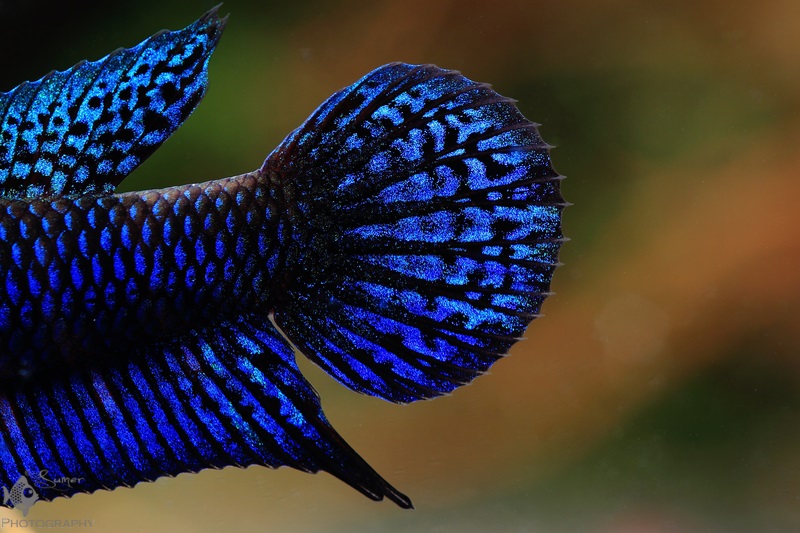
A close up shot of the tail. Incredible colors. The more close I went, the more details I could see.
Did you enjoy the images? Was it helpful? Do you keep any wild strains of bettas? Let me know in the comment below.
-Sumer

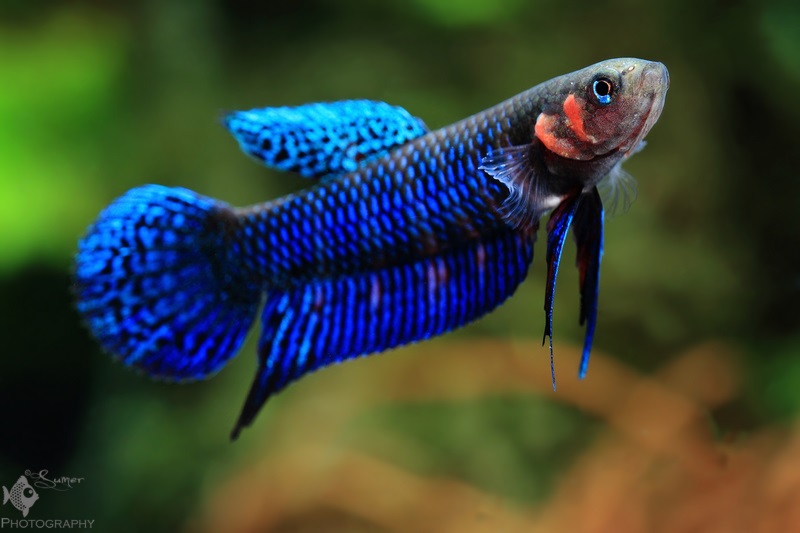
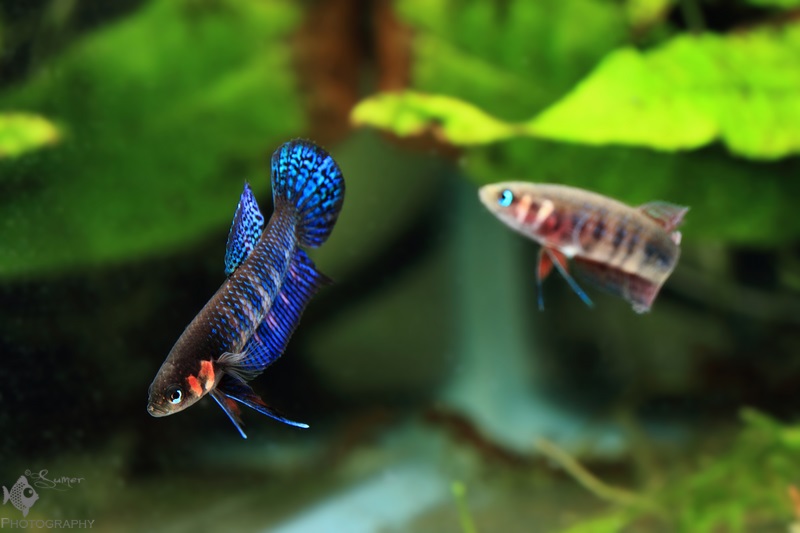
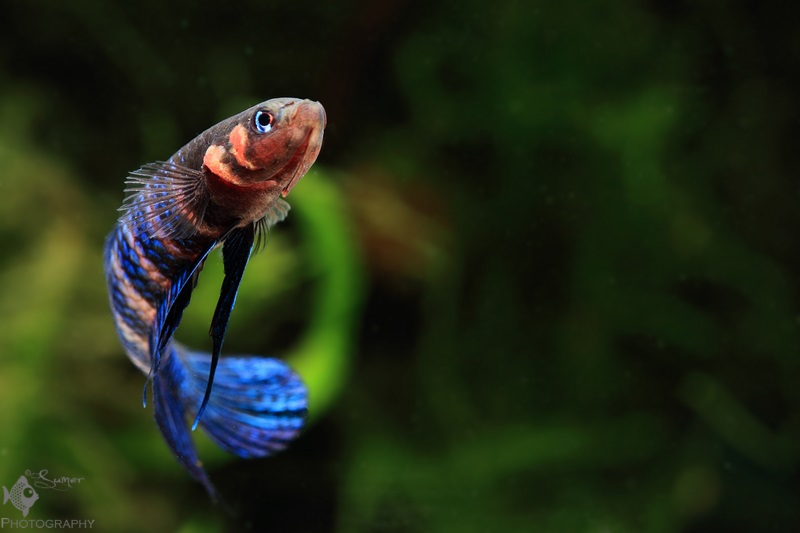
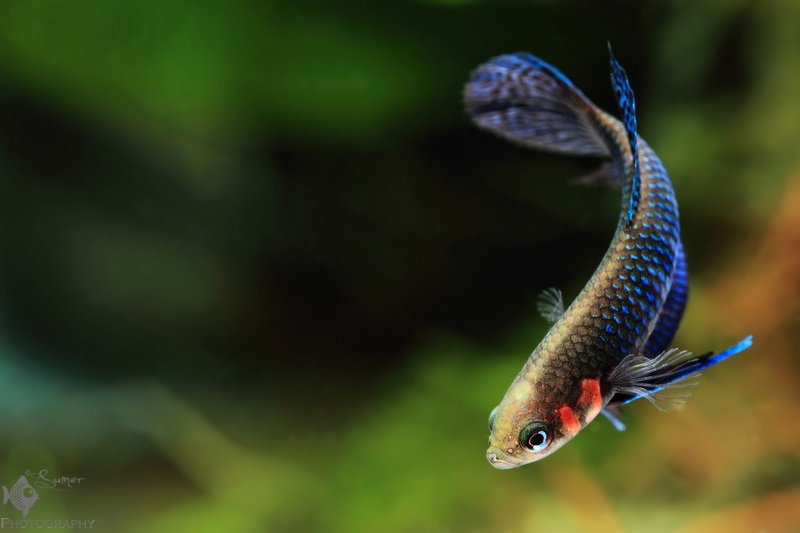
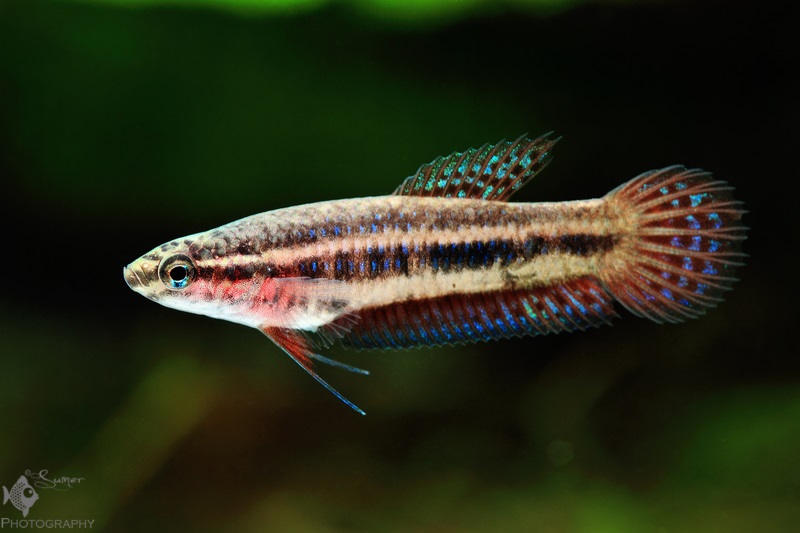
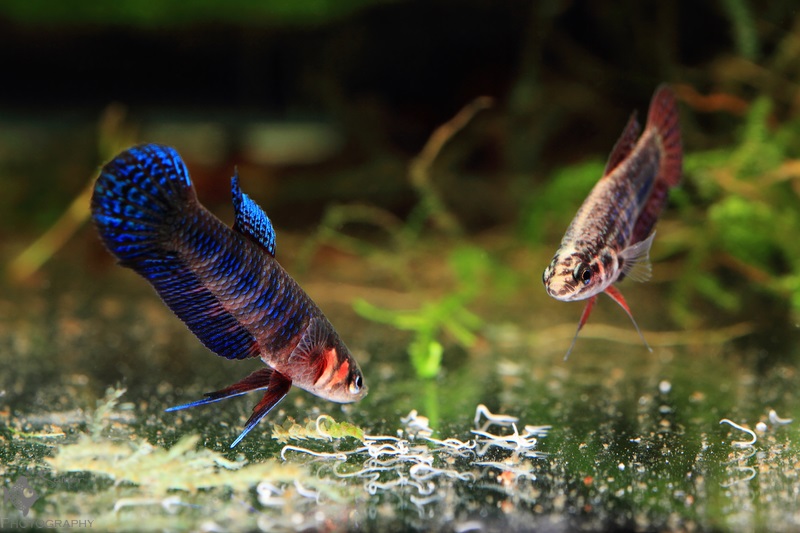
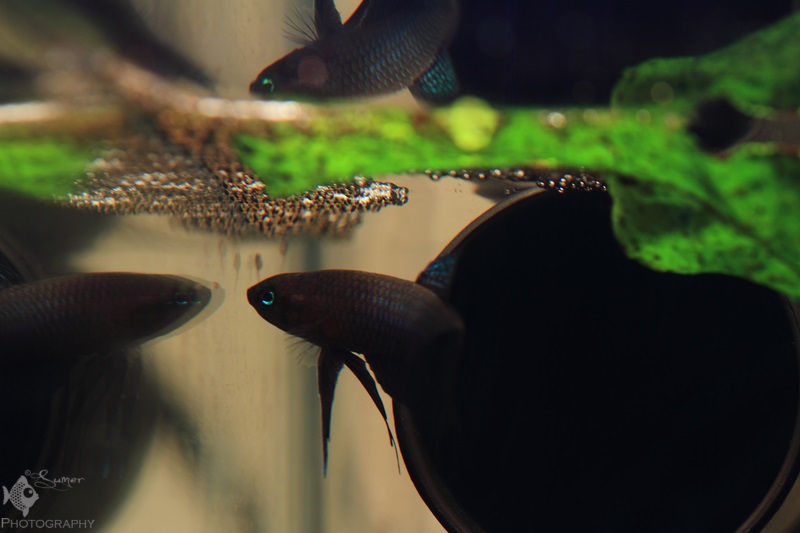





Fabulous photos of Betas by Tiwari. Enjoyed them very much
Hi Sumer,
Lovely Pics… and a Great Article … Hope to Read More Articles from You….Congratulations !! and Best Wishes..
Great article, photos, and video. I would definitely like this fish. Right now I have macrostoma. Thanks and good luck.
great photos !!!
Thanks everyone for their kind comments. I am glad you all liked the photos and the write-up.
Beautiful these pictures. I didnt know this species of Betta. Mr. Tiwari, do you sell here for Brazil? I would like a pair, if possible.
Nice article- just a clarification that for ‘slightly acid’ read max pH 5:- these guys come from peat swamp puddles where the pH is often 3 !
What a wonderful article! To be honest i have never been a big betta fan, too over glorified. Though now i will have to take it back, these wild types look amazing. lovely pictures! the article was well written and flowed nicely.
side note: how can one obtain these? I have looked around briefly i can find many just not these specifically. I can not find anyone who breeds/or sells.
Hello, I added your photo in my blog post about wild betta. I place your site as source and a link back to your site.
I keep a female Betta enisae in a 10 gallon aquarium, I have 7 different set-ups, she was accidentally sold as a splenden, moved her once I realized. Now I am intrigued to try the hendrens, never seen any at my local Pet Club, Hayward, CA. I had to educate Them about the mix-up it had completely escaped their notice, sold different bettas than the splendens they intended… LMMFFAO!